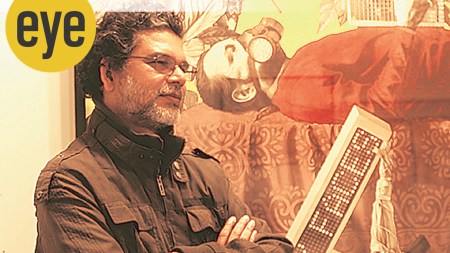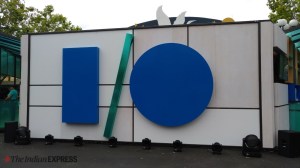- India
- International
As Chandrayaan-3 slips closer to Moon, a helpful nudge from Chandrayaan-2
The moon landing process in the Chandrayaan-3 mission will begin today with a small firing of the engines on board the lander to slow down (deboost) the lander which has been until now been propelled towards the moon at great speed.
 An illustration showing Chandrayaan-3's propulsion and lander modules separating. (ISRO / Twitter)
An illustration showing Chandrayaan-3's propulsion and lander modules separating. (ISRO / Twitter) The lander module of Chandrayaan-3 carried out the first of its two scheduled orbit-reduction manoeuvres Friday and slipped closer to the moon.
The lander module is now in a 113 km x 157 km orbit around the moon. It will undergo a similar operation Sunday to get even closer ahead of a scheduled landing on August 23.
“The lander module health is normal,” Indian Space Research Organisation said in a tweet.
Having separated itself from the propulsion module, Chandrayaan-3 lander’s communication system will now be tethered to the orbiter of Chandrayaan-2 which has been going around the moon for four years now.
While the lander of 2019 Chandrayaan-2 mission had failed to make a soft touchdown on lunar surface, its orbiter component is still in the lunar orbit and is helping to ensure the success of Chandrayaan-3.

In fact, it has already played an important role in identifying a relatively safe landing spot for Chandrayaan-3. It will now also facilitate communications between the Chandrayaan-3 lander and the ground station during and after the landing.
The Chandrayaan-3 mission’s communication network with earth stations has been configured in a manner where the lander will send data to the Chandrayaan-2 orbiter which will, in turn, relay it to ground stations of ISRO and collaborative agencies. The Chandrayaan-3 lander also has the redundancy capacity to communicate directly to earth.
“Ultimately, the radio signals will come to earth from the orbiter and this is not from Chandrayaan-3 but from the orbiter of Chandrayaan 2. The Chandrayaan-2 orbiter is functioning very well and it will communicate with the Chandrayaan-3 lander. This signal will reach the ground station,” ISRO chairman S Somnath said in a public interaction on August 9.
“Suppose, for any reason, the Chandrayaan-2 orbiter is not working properly then the Chandrayaan-3 lander will communicate directly with Earth. For the rover (which will be released after a safe and soft landing) the communication is only with the lander and the lander will communicate with the orbiter or earth stations,” Somnath said.
While the Chandrayaan-2 landing attempt was guided in the identification of a landing site by images obtained from moon missions of other space agencies, the identification of a 4 km by 2.4 km landing site for the Chandrayaan-3 lander has been done by an Orbital High Resolution Camera (ORHC) on board the Chandrayaan-2 orbiter.
“The landing site area is increased to four km by 2.4 km against the (earlier) 0.5 x 0.5 for C2. The lander will land in the middle of the landing site. The landing site has been imaged properly. We found that the landing site is reasonably flat but it still contains craters and boulders but compared to other locations it is flatter. The camera (onboard the lander) will still have to look before landing to see there are no craters or boulders,” the ISRO chairman said.
Indeed, the Chandrayaan-3 mission did not have a heavyweight orbiter system attached to it on account of the presence of the Chandrayaan-2 orbiter in space. The orbiter in the current mission was merely a propulsion system which carried one science instrument on board. This has allowed ISRO to make the lander — which crashed in 2019 – more crash-proof and rugged.
“The orbiter in Chandrayaan 3 is called the propulsion module because it does not have any payloads. The lander is heavier now since some of the mass of the earlier orbiter is moved to the lander to make it more rugged,” Somnath said.
Although the propulsion module bid farewell to the Chandrayaan 3 lander on Thursday – as the lander separated from the propulsion module to make its own way to the surface of the moon – the propulsion module will continue orbiting the moon for six months or more.
The propulsion module has an instrument called the Spectro Polarimetry of Habitable Planet Earth (SHAPE), an experimental payload to look back at earth and study the signatures that make it a habitable planet, to identify habitable planets outside the solar system.
More Tech
May 12: Latest News
- 01
- 02
- 03
- 04
- 05







































